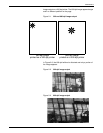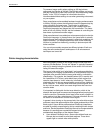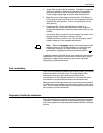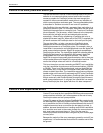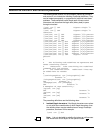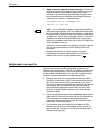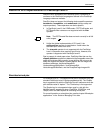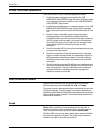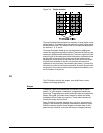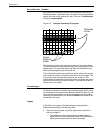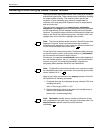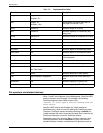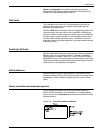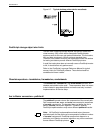
POSTSCRIPT
XEROX DOCUPRINT NPS GUIDE TO USING PAGE DESCRIPTION LANGUAGES 2-19
Figure 2-4. Stroke function
The top illustration above shows four columns of three pixels on the
printing device. The dashed lines intersect at the center points of the
device pixels or dots. The columns from left to right are designated
as columns 1, 2, 3, and 4.
The lower illustration builds on the top illustration by adding two
vertical line segments that will be stroked. The sides of the line to be
stroked are indicated with solid bold lines. The line to right has its left
side to the left of the center point of the third column of pixels and has
its right side to the right of the center point of the fourth column.
Because the center points of the third and fourth columns of pixels
are within the thickness of this line, all six pixels are turned on
(indicated in this picture by cross-hatching the pixels). Contrast this
with the line on the first and second columns of pixels. Because the
center point of the second column falls outside its boundaries, only
the first column is turned on.
Fill
The Fill function controls the shapes, zero-width lines, curved
shapes, and image operators.
Shapes
A shape is a path to be painted with the current color or with a
pattern. To paint shapes, “insideness” computations need to be
performed. These determine which pixels fall inside and outside the
shape. During fill, the pixels whose centers lie within the inside
boundaries of the shape are turned on. Those whose centers lie
outside the shape are turned off.
Some PostScript creators describe long, very thin, rectangular fill
regions in the masters (for example, boundaries of boxes or rules).
DocuPrint selects some of those shapes and treats them as thin
paths that are “stroked” to ensure that they are imaged (painted).



